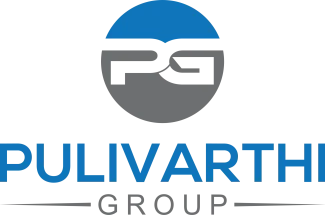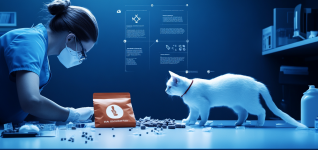The nursing profession is increasingly under strain, facing multifaceted challenges that can lead to substantial burnout among healthcare professionals. Key issues include administrative burdens, staffing shortages, and overwhelming documentation workloads. As we approach the implementation of the 2025 Code of Ethics, it is vital to address these challenges to foster a healthier work environment for nurses in the United States. Artificial Intelligence (AI) emerges as a transformative force, offering innovative solutions to help alleviate workloads, thereby enhancing work-life balance.
Understanding Nurse Burnout: Causes and Implications
Nurse burnout is not just a personal struggle; it has systemic implications that affect not only the healthcare professionals themselves but also patient care and overall healthcare quality. Burnout manifests as emotional exhaustion, depersonalization, and a reduced sense of accomplishment. According to a study published in Daily Nurse, nearly 50% of nurses reported feelings of burnout. This alarming statistic highlights the dire need for effective interventions.
Addressing Administrative Burdens: The Role of AI
Administrative tasks have become one of the most significant sources of stress for nurses. From scheduling and documentation to direct communication with patients and other staff members, these responsibilities can detract from the time and energy that nurses can dedicate to patient care. Here’s how AI can help:
- Intelligent Scheduling: AI-driven scheduling tools can efficiently manage staffing needs, aligning nurse availability with patient demand.
- Automated Documentation: AI can automate various documentation tasks, allowing nurses to focus on direct patient care instead of paperwork.
- Streamlined Communication: AI-powered chatbots can handle routine queries, freeing up nurses to concentrate on more complex patient needs.
Mitigating Staffing Shortages with Predictive Analytics
Across the United States, staffing shortages have reached critical levels, exacerbated by the ongoing pressures of the COVID-19 pandemic. We must enhance workforce management through AI-driven predictive analytics. By leveraging data, healthcare administrators can:
- Anticipate Staffing Needs: Predictive tools can forecast patient inflows based on historical data, enabling proactive hiring and scheduling decisions.
- Optimize Workforce Distribution: AI can analyze patient acuity levels and match them with the right staff qualifications, ensuring that labor resources are used effectively.
- Reduce Overtime Costs: By efficiently managing staffing levels, institutions can curtail the reliance on expensive overtime hours.
Documentation Overload: Combatting the Paperwork Dilemma
Documentation tasks account for a significant portion of a nurse’s day. Research indicates that nurses spend about 20% of their time on documentation. AI can alleviate this survival overload through:
- Electronic Health Record (EHR) Optimization: AI tools can enhance the user experience with intuitive interfaces that simplify data entry.
- Natural Language Processing (NLP): AI applications equipped with NLP can automatically transcribe nurses’ verbal notes into patient records.
- Data Insights: Smart analytics can assist nurses in identifying trends and insights from patient data without the manual labor involved in traditional data processing.
Enhancing Work-Life Balance Through AI
The implementation of AI tools can significantly enhance work-life balance for nurses. By alleviating routine burdens, nurses can dedicate more of their energy to patient care, professional development, and personal time. This shift can lead to:
- Improved Job Satisfaction: Nurses who spend less time managing administrative tasks report higher job satisfaction levels.
- Better Patient Care: By focusing on their patients, nurses can provide more personalized care, improving outcomes.
- Higher Retention Rates: Organizations adopting AI tools can witness improved nurse retention rates, which are critical for maintaining staffing levels.
Real-World Examples of AI in Nursing
Several hospitals and healthcare systems have effectively integrated AI technology into their nursing processes. Some notable examples include:
- Mount Sinai Health System: Implemented an AI tool that predicts patient discharge dates to optimize nurse assignments and patient flow.
- Mayo Clinic: Utilizes AI to analyze patient records and flag those presenting similar symptoms, enabling nurses to prioritize care effectively.
- Cleveland Clinic: Employs machine learning algorithms to assist with identifying patients at risk of deterioration, allowing timely intervention by nursing staff.
Preparing for the 2025 Code of Ethics: The Importance of Technology Integration
As the healthcare industry prepares for the 2025 implementation of the Code of Ethics, the integration of technology, particularly AI, becomes increasingly vital. This code emphasizes ethical principles such as accountability, respect, and integrity. AI can support these principles by:
- Enhancing Transparency: AI systems allow for clear documentation of care provided, enhancing accountability among healthcare staff.
- Facilitating Informed Decision-Making: AI-designed dashboards can provide nurses and healthcare administrators with immediate access to patient data, supporting ethical clinical decision-making.
- Promoting Patient Compliance: AI tools can help in engaging with patients, providing them with necessary information tailored to their unique needs and preferences.
Conclusion: The Path Forward with AI in Nursing
The healthcare landscape is constantly evolving, and the challenges facing nurses are daunting. However, the integration of AI in nursing workflows offers a promising avenue to alleviate these burdens. By addressing issues like burnout, staffing shortages, and documentation overload, AI can help foster a healthier work environment conducive to both nurses and patients.
Nursing professionals, educators, and healthcare administrators must explore AI solutions to transform nursing workflows and enhance overall well-being. The adoption of these innovative technologies not only facilitates a smoother operational flow but also leads to improved job satisfaction and better patient outcomes. Together, we can navigate the complexities of modern nursing, ensuring that healthcare professionals are well-prepared and supported for the future.
















